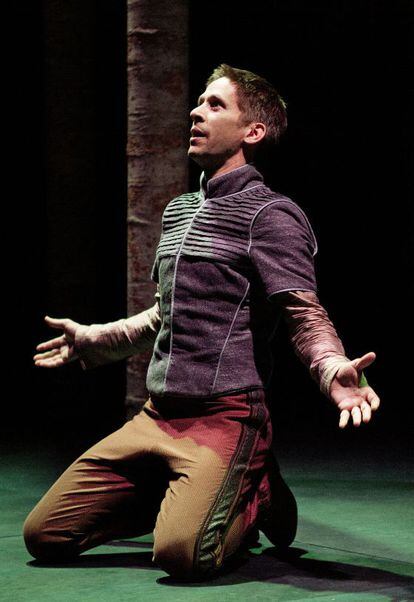Spain’s Golden Age shines on Shakespeare’s stage
London’s Globe Theater hosts historic production of Lope de Vega’s ‘Punishment Without Revenge’


Over the years, Shakespeare’s Globe, the reconstruction of a 17th-century theater on London’s South Bank, has occasionally staged productions of works other than the Bard of Avon’s – although until now it has never featured anything by Shakespeare’s Spanish contemporaries. This Monday will remedy this absence with a historic performance of Punishment Without Revenge, by Félix Arturo Lope de Vega y Carpio.
Madrid-based company Fundación Siglo de Oro, set up to bring to a wider audience works from Spain’s Golden Age — which lasted from around 1590 to 1680 — will be performing Lope de Vega’s tale of honor and revenge set in motion when Federico, bastard son of the Duke of Ferrara, falls in love with Cassandra, his father’s intended bride, and she with him.
“For us the Globe is one of those places that seemed far away, unreachable,” says Rodrigo Arribas, co-founder of the company along with Alejandra Sáenz, and one of its main actors.
For us the Globe is one of those places that seemed far away, unreachable”
The Globe first contacted the company in 2012, when it was looking for participants in London’s Cultural Olympics. Siglo de Oro was selected to take part in a project that involved companies from around the world staging their version of one of Shakespeare’s plays. Their production of Henry VIII was considered one of the highlights of the event.
Two years later, the company is back at the Globe, this time working in their native Castilian, with a play that Ernesto Arias, the director, describes as “an impossible love. An incestuous relationship that in those days was absolutely taboo. What’s more, Lope does so without offering any solution, or blaming any one character.”

Dominic Dromgoole, the artistic director of the Globe, highlights the “historic connection” between Shakespeare and Lope de Vega. “They were both capable of depicting savagery and passion. They also share the same approach to addressing their audiences, in that they were hugely ambitious in the way that they told their stories. They are both great portraitists of the societies they lived in: the ruling classes, the middle classes, and the working classes all fit into the same hand.”
Both Shakespeare and Lope de Vega were capable of depicting savagery and passion”
Over its decade of existence, the Fundación Siglo de Oro has won a reputation for its faithful adaptations. “The Globe is a demanding venue: there is little lighting and the sets are minimal, but this works perfectly for us,” says Arribas.
“In these kinds of performances, there is only the spoken word,” says Arias. “The Globe is a huge open-air theater with room for 1,400 people, 800 of whom would have been standing and who may not have been able to see what was happening on the stage all the time: so they have to be told. If somebody says, ‘I am dying’ another character will say, ‘He is dying!’ and a third will then shout, ‘He has died!’. Everything is measured in words.”
The Globe is a huge open-air theater with room for 1,400 people, 800 of whom would have been standing”
Arias says he’s aware of the importance of the performance: “Not just for us, but for Spanish theater, for Spanish culture, and above all, our language.”
How would Shakespeare have handled Lope de Vega’s topic? Dominic Dromgoole says that although the two writers had much in common, there were huge differences in the way they wrote. “Lope was concerned about issues that Shakespeare never touched on. So they would always have approached their respective topics from different angles.”










































